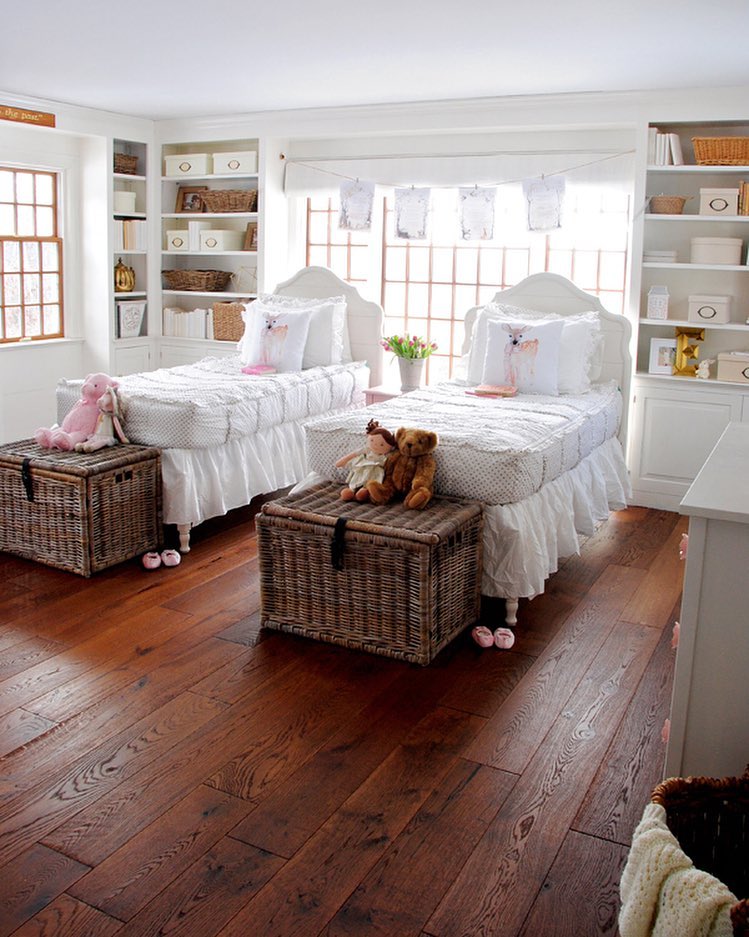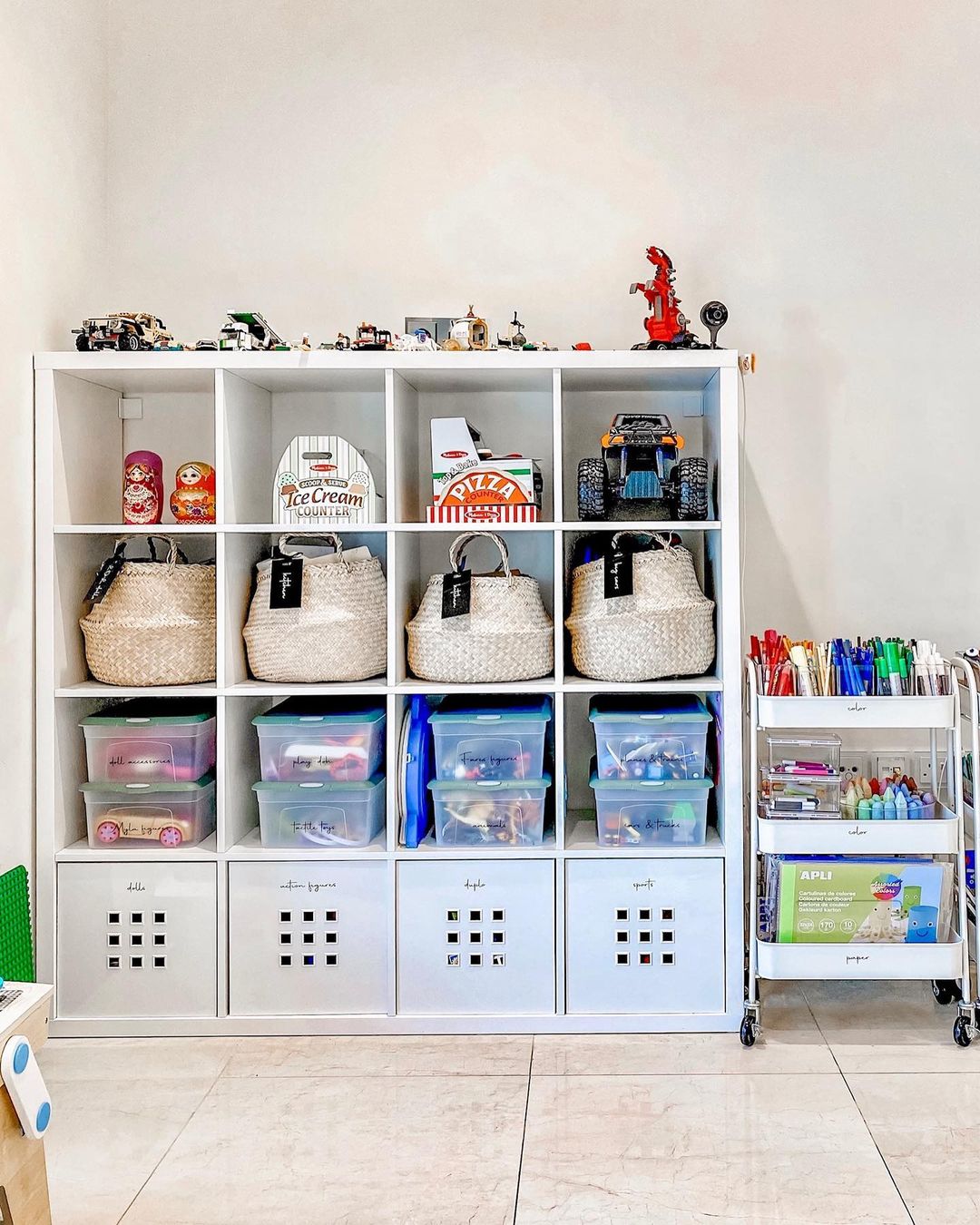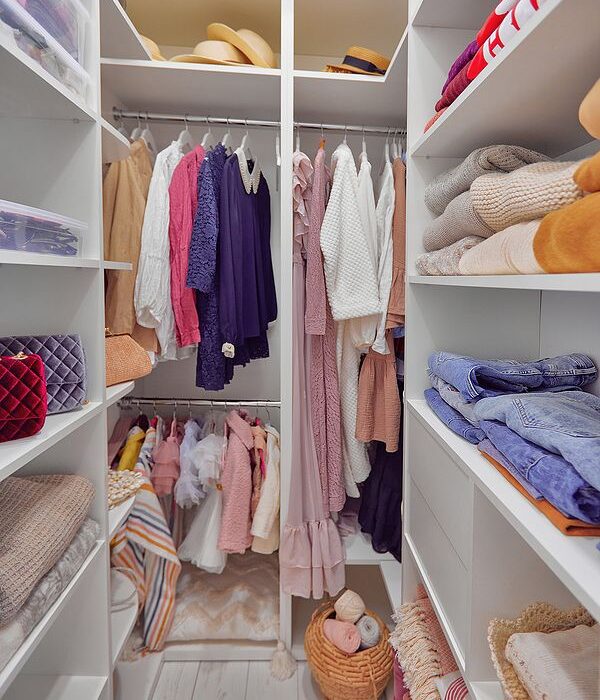Keeping a child’s room tidy can be a challenge. With toys, books, and clothes everywhere, it’s easy to feel overwhelmed.
Effective clothes organizers can help create a neat space for your little ones. They not only keep everything in order but also make it easier for kids to find what they need. By using fun and creative storage ideas, you can turn chaos into calm.
From colorful bins to clever shelving, there are many ways to maximize space. This can lead to a more enjoyable environment for both parents and kids. In this blog post, we’ll explore some innovative clothes organizing solutions that fit any room size. Get ready to transform clutter into creativity!
Table of Contents

Credit: www.extraspace.com
The Challenge Of Kids’ Clothing Storage
Storing kids’ clothes can be tricky. They grow fast. Their needs change quickly. Finding the right solutions is essential for busy parents. Effective storage makes life easier. It keeps rooms tidy and organized.
Space Limitations In Kids’ Rooms
Kids’ rooms often have limited space. Many homes lack large closets. A small room can feel cluttered fast. This makes choosing the right storage crucial.
Here are some clever storage ideas:
- Under-bed storage: Use bins or drawers to store clothes.
- Vertical shelving: Install shelves to maximize wall space.
- Hooks and pegs: Hang bags and jackets on the walls.
- Multi-functional furniture: Use benches or ottomans with storage.
Growth Spurts And Changing Wardrobes
Kids experience rapid growth. Clothes become too small quickly. This leads to frequent wardrobe changes. Parents must adapt storage as sizes change.
Consider these tips for managing changing wardrobes:
- Sort clothes by size: Keep clothes organized by age.
- Seasonal rotations: Store out-of-season clothes in bins.
- Donation box: Keep a box for clothes to donate.
- Labeling: Label bins and shelves for easy access.
Effective storage helps manage growth spurts. It keeps kids’ clothing organized and accessible. A well-planned system saves time and reduces stress.
Assessing Your Space
Creating an organized space for your little kids is important. A well-arranged area makes it easier for them to find their clothes. Start by assessing your space. This helps you decide how to use it best.
Evaluating The Closet
First, check the closet size. Measure the height, width, and depth. Knowing these dimensions helps you choose the right organizers.
- Look for shelves and rods.
- Count the number of hanging items.
- Check for storage bins or drawers.
Next, sort through the clothes. Decide what to keep, donate, or toss. This will clear space. Keep only what your child wears. Use bins for out-of-season clothes.
| Clothing Type | Keep | Donate | Throw Away |
|---|---|---|---|
| Tops | 5 | 3 | 1 |
| Pants | 4 | 2 | 0 |
| Outerwear | 3 | 1 | 0 |
Considering The Room Layout
Next, think about the room layout. Where is the closet located? Is it easy to reach? Make sure the organizers do not block pathways. Keep frequently used items at eye level.
- Place a small shelf near the closet.
- Use hooks for bags and hats.
- Choose baskets for easy access.
Consider using vertical space. Wall-mounted shelves can add extra storage. This keeps the floor clear. A tidy room feels more inviting.
Plan the layout with your child. Involve them in choosing organizers. They will enjoy the process. This helps them take ownership of their space.
Sorting And Purging
Sorting and purging are essential steps in organizing kids’ clothes. It helps clear out the clutter. This makes space for new items. A well-organized closet is easy to maintain. It also makes it easier to find what your child needs.
Creating A Keep, Donate, Or Toss System
Start by setting up three boxes or bins. Label them as:
- Keep – for clothes your child wears regularly
- Donate – for clothes in good condition but no longer needed
- Toss – for clothes that are too worn or damaged
Go through each item in your child’s wardrobe. Ask questions like:
- Does my child wear this?
- Is it too small or large?
- Is it in good shape?
Sort each piece of clothing into the appropriate bin. This method simplifies decisions. It keeps the process moving.
Involving Your Child In The Process
Get your child involved in sorting. It teaches them about choices and responsibility. Start with the “keep” box.
Let them pick their favorite clothes. Encourage them to think about what they really love. This can make decluttering fun.
For the “donate” box, explain how their clothes can help others. This encourages empathy. It helps them feel proud of their choices.
For the “toss” box, explain the importance of letting go of damaged items. This keeps their space tidy.
Involving your child makes the process smoother. They learn valuable lessons about organization and generosity.
Maximizing Closet Potential
Closets can be a challenge, especially for kids. They often become messy and hard to manage. With a few smart ideas, you can turn chaos into order. Organizing kids’ clothes helps you find what you need quickly. It also teaches kids to keep their space tidy.
Adjustable Shelving Solutions
Adjustable shelves offer flexibility. You can move them up or down based on your needs. This is great as your child grows. Here are some advantages:
- Customizable height for different items.
- Easy to rearrange as kids change sizes.
- Maximize vertical space in the closet.
Consider using a mix of shelf sizes. For example, place smaller shelves for shoes or toys. Use larger shelves for clothes. This setup keeps everything visible and easy to access.
Hanging Organizers And Their Benefits
Hanging organizers make use of vertical space. They come in various styles and sizes. Here are some benefits:
- Keep clothes wrinkle-free.
- Organize accessories like hats and scarves.
- Easy to see and grab what you need.
Hanging organizers can fit in any closet. You can use them on doors or rods. Choose clear pockets to see contents easily. This helps kids find things without help.
Consider these types of hanging organizers:
| Type | Use |
|---|---|
| Over-the-Door Organizers | Great for shoes, toys, or books. |
| Hanging Shelves | Store folded clothes and blankets. |
| Multi-Pocket Organizers | Perfect for accessories and small items. |
Using these ideas can help maximize closet potential. Organize your child’s clothes effectively. Make their space functional and fun.
Drawer Dividers For Easy Access
Drawer dividers make organizing clothes for little kids simple. They help keep items separated and easy to find. No more digging through piles of clothes. Kids can find what they need quickly, teaching them to be organized.
Diy Divider Ideas
Creating your own drawer dividers can be fun and cost-effective. Here are some simple DIY ideas:
- Cardboard Dividers: Cut cardboard to fit drawer size. Create sections for shirts, pants, and socks.
- Plastic Containers: Use small plastic bins to divide items. They are affordable and stackable.
- Felt or Fabric: Sew fabric strips to create soft dividers. This adds a colorful touch.
- Wooden Dividers: Use small wood pieces. Sand them down to prevent splinters.
These DIY options are easy to customize. Choose colors and designs that match your child’s room.
Purchasing Custom Solutions
Buying custom drawer dividers is another great choice. These solutions fit perfectly in drawers. They help keep clothes organized.
| Type | Features | Price Range |
|---|---|---|
| Adjustable Dividers | Can be resized to fit any drawer | $15 – $30 |
| Fabric Dividers | Soft material, great for delicate items | $10 – $25 |
| Wooden Dividers | Durable and sturdy, classic look | $20 – $50 |
| Plastic Dividers | Lightweight, easy to clean | $5 – $20 |
Choose the right solution for your needs. Custom dividers keep drawers tidy. They make it easy for kids to find clothes.
Under-the-bed Storage Tactics
Making the most of under-the-bed space is smart. This area often goes unused. Using it wisely can help you organize your kids’ clothes. It creates extra room in the closet. Let’s explore two effective methods: rolling bins and vacuum-sealed bags.
Rolling Bins For Seasonal Clothing
Rolling bins are perfect for storing seasonal clothes. They fit neatly under the bed. Kids grow fast, so clothes change often. Keep out-of-season clothes in these bins. Here are some tips:
- Choose bins with wheels for easy access.
- Label each bin by season or size.
- Use clear bins to see contents easily.
- Stack bins to save more space.
Rolling bins keep clothes organized. They also protect items from dust. This method makes it easy to swap clothes as seasons change.
Utilizing Vacuum-sealed Bags
Vacuum-sealed bags are great for saving space. They reduce the volume of clothing. This method is perfect for bulky items. Here’s how to use them:
- Sort clothes by type and season.
- Place items in the vacuum-sealed bag.
- Seal the bag tightly to remove air.
- Store bags under the bed or in closets.
Vacuum-sealed bags keep clothes fresh. They save a lot of space. This tactic is efficient and helps keep your home tidy.
Vertical Space Usage
Using vertical space is smart for organizing kids’ clothes. It helps keep things tidy and frees up floor space. Kids can easily reach their items. Here are some creative ideas for using vertical space effectively.
Over-the-door Hangers
Over-the-door hangers are simple yet effective. They fit over most doors and create extra storage. Here are some benefits:
- Easy to install
- Doesn’t take up floor space
- Great for small rooms
Consider these options:
| Type | Use | Example Items |
|---|---|---|
| Pocket Organizers | Store shoes, toys, or accessories | Sneakers, dolls, hats |
| Hooks | Hang backpacks or jackets | Backpacks, coats |
| Racks | Store multiple items | Bags, lunchboxes |
Wall-mounted Shelves And Hooks
Wall-mounted shelves and hooks save space. They keep clothes and toys off the floor. Here are some tips:
- Place shelves at kid-height.
- Use colorful bins for toys.
- Install hooks for easy access.
Consider these ideas:
- Install a shelf above the dresser.
- Use hooks for jackets and bags.
- Label bins for easy sorting.
These options help kids learn to organize their belongings. A neat room creates a calm space for play and rest.

Credit: www.extraspace.com
Labeling For Independence
Labeling can help kids find their clothes easily. It gives them a sense of control. When children know where things are, they feel more independent. Simple labels can make a big difference in your child’s daily routine.
Picture Labels For Pre-readers
For young kids who cannot read yet, picture labels work well. These labels show images of the items. Here are some tips for using picture labels:
- Use clear, colorful images.
- Place labels at the child’s eye level.
- Attach labels to bins or drawers.
Kids can easily recognize their clothes. They learn to put things away by themselves. This builds confidence and responsibility.
Color-coding For Quick Selection
Color-coding is another effective method. Assign a color for each type of clothing. For example:
| Type of Clothing | Color Code |
|---|---|
| T-shirts | Blue |
| Pants | Red |
| Socks | Green |
| Jackets | Yellow |
Kids can quickly identify their clothes. They learn to choose outfits without help. This skill promotes independence and self-sufficiency.
Furniture With Built-in Storage
Furniture with built-in storage is a smart choice for kids’ rooms. It helps keep spaces organized. These pieces combine function and style. They save space and reduce clutter. Let’s explore some great options.
Beds With Drawers
Beds with drawers are perfect for storing clothes and toys. They maximize under-bed space. Here are some benefits:
- Extra Storage: Use drawers for off-season clothes.
- Easy Access: Kids can reach their items easily.
- Space Saving: No need for extra furniture.
These beds come in various styles. Choose one that fits your child’s room. Some popular styles include:
| Style | Description |
|---|---|
| Classic Wooden Bed | Timeless design with sturdy drawers. |
| Loft Bed | Elevated bed with space for a desk below. |
| Bunk Bed | Perfect for siblings, with drawers underneath. |
Storage Benches And Ottomans
Storage benches and ottomans offer stylish seating. They also hide toys and clothes inside. Here are some reasons to choose them:
- Dual Purpose: Provides seating and storage.
- Versatile: Fits anywhere in the room.
- Fun Designs: Available in colorful patterns.
Consider these ideas for using storage benches and ottomans:
- Place one at the foot of the bed.
- Use it as a toy box in the play area.
- Incorporate it in reading nooks.
These furniture options make organizing easy. Create a fun and tidy space for your kids.
Creative Diy Projects
DIY projects are fun and useful. They help you create storage for your kids’ clothes. Using simple materials, you can make unique organizers. These projects are easy and affordable. Let’s explore two exciting ideas: upcycling old furniture and making handmade closet organizers.
Upcycling Old Furniture
Upcycling is a great way to reuse old furniture. It reduces waste and saves money. You can transform items into creative storage solutions.
- Dressers: Turn an old dresser into a colorful storage unit.
- Bookshelves: Use bookshelves to store folded clothes and toys.
- Crates: Stack wooden crates for a fun and rustic look.
- Benches: Add cushions to benches for seating and storage.
Choose bright colors to make these items cheerful. Paint and stencils can add fun designs. This way, you create a playful space for your kids.
Handmade Closet Organizers
Handmade closet organizers are another fun project. They help keep clothes neat and tidy. You can use simple materials like fabric, cardboard, or baskets.
- Fabric Bins: Sew or glue fabric around cardboard boxes.
- Hanging Organizers: Use shoe organizers to hold small items.
- Labeling: Label each bin to show what goes inside.
- Baskets: Use baskets for easy access to clothes and toys.
These organizers can be colorful and fun. They make dressing easier for your kids. Plus, it teaches them to keep their space organized.
Creative DIY projects offer a chance to bond with your kids. Enjoy the process of creating together. Not only will you maximize space, but you will also make lasting memories.
Involving Kids In Organizing
Getting kids involved in organizing their clothes can be fun. It teaches them responsibility. They learn to take care of their things. Using creative methods keeps them engaged. Here are some ideas to make organizing enjoyable.
Teaching Tidiness Through Games
Games make cleaning up exciting. Turn organizing into a fun challenge. Here are some game ideas:
- Sorting Race: Set a timer. See who can sort clothes fastest.
- Color Match: Have kids group clothes by color.
- Item Hunt: Hide items. Kids find and put them in the right spot.
These games make the task feel less like work. Kids enjoy playing while learning to stay tidy.
Reward Systems For Maintained Order
Rewards motivate kids to keep things organized. Create a simple reward system. Here are some ideas:
| Task | Reward |
|---|---|
| Putting clothes away | Sticker for their chart |
| Sorting laundry | Extra story at bedtime |
| Keeping their space tidy for a week | Choice of a small toy |
Rewards can be small but meaningful. Kids feel proud of their efforts. They learn that staying organized has benefits.
:strip_icc()/cubby-storage-bins-cabinet-3ymwhSAWq0bAYqDUCqATFB-55faa8ba46394cfbb5a5480381ab6008.jpg)
Credit: www.bhg.com
Seasonal Clothing Swap Strategies
Managing kids’ clothes can be a challenge. Seasonal clothing swaps make it easier. These strategies help you organize and store clothes. They keep your child’s wardrobe fresh and functional.
Storing Off-season Items
Storing off-season clothes is essential for space-saving. Here are some tips:
- Use clear bins for visibility.
- Label bins by size and season.
- Choose breathable storage bags for delicate fabrics.
Fold clothes neatly to save space. Store winter clothes in summer. Swap them for summer clothes as the weather changes. This keeps your child’s wardrobe tidy.
Rotating Wardrobes With The Weather
Rotating clothes based on the weather keeps outfits relevant. Follow these steps:
- Check the weather forecast weekly.
- Choose clothes appropriate for the season.
- Quickly swap items in the closet.
Keep favorite items accessible. Use a system to track what fits. Rotate clothes every few months. This ensures your child has what they need.
| Season | Clothing Types | Storage Tips |
|---|---|---|
| Winter | Coats, sweaters, boots | Store in large bins with labels |
| Spring | Light jackets, rain gear | Use breathable bags for storage |
| Summer | Shorts, t-shirts, sandals | Keep on hangers in a closet |
| Fall | Long sleeves, layers | Fold and store in labeled boxes |
These seasonal strategies create a functional wardrobe. They help kids find clothes easily. Parents can enjoy a more organized space.
Maintaining The Organization
Keeping your kids’ clothes organized is essential. It saves time and space. Regular upkeep helps maintain a tidy area. Simple routines can make a big difference.
Daily Routines For Upkeep
Establishing a daily routine is key. Here are some easy steps to follow:
- Encourage kids to put away clothes after changing.
- Have a designated place for dirty clothes.
- Make it fun. Use a timer for quick clean-up.
Set a specific time for tidying up. This can be after playtime or before bedtime. Consistency helps children remember their tasks.
Monthly Check-ins And Adjustments
Monthly check-ins keep the organization fresh. Use this time to evaluate and adjust as needed. Here’s what to do:
- Sort through clothes. Remove items that no longer fit.
- Donate or recycle clothes in good condition.
- Reorganize storage spaces. Make adjustments based on the season.
Creating a simple checklist can help. Here’s a sample:
| Task | Frequency |
|---|---|
| Sort clothes | Monthly |
| Donate items | Monthly |
| Reorganize storage | Seasonally |
These steps ensure the organization stays effective. Regular maintenance makes a big impact.
Frequently Asked Questions
How Can I Organize My Child’s Clothes Effectively?
Use bins, shelves, and hooks. Label containers for easy access.
What Are Some Creative Storage Ideas For Kids’ Clothes?
Try using baskets, drawer dividers, or hanging organizers. They save space and look nice.
How Do I Maximize Closet Space For Kids’ Clothing?
Use vertical space with shelves. Add hooks for accessories. Keep it tidy!
What Types Of Organizers Work Best For Small Bedrooms?
Consider under-bed storage, wall-mounted shelves, and multi-tier racks. They save room!
How Often Should I Declutter My Child’s Clothing?
Check every season. Remove items that no longer fit or are unused.
Conclusion
Keeping your kids’ clothes organized can be simple and fun. Use creative storage solutions to save space. Try bins, hooks, and shelves to keep things tidy. Teach your children to help with organization. This builds good habits early on. A neat space makes finding clothes easier.
Everyone benefits from a clean room. Start small and gradually improve your system. Enjoy the process of organizing together. A little effort goes a long way in keeping things in order. Happy organizing!







